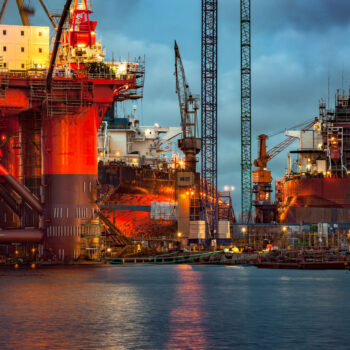COP 23 is a COP of firsts – the first Island COP, the first COP after the US withdrawal announcement and the first COP after a year of historic extreme weather impacts worldwide.
But how can this be a first-class COP that delivers a robust outcome? And with few concrete policy deadlines what does success at COP 23 actually look like? How will this COP fuel the politics of ambition, helping to secure enhanced ambition by 2020?
Regime: building the bedrock
Following Trump’s withdrawal announcement, the rest of the world was quick to reaffirm their commitment to the Paris Agreement. However, COP 23 is the first occasion all countries will have to step up and deliver on their re-commitments. As such, success will depend on how countries cooperate and engage, to move on from Trump-mania and get on with implementing the Paris Agreement. (Read more in our “Five stories that aren’t about Trump” blog). In particular, this involves delivering solid progress on the Paris rulebook, and the facilitative dialogue.
A robust rulebook is foundational to increasing ambition. Robust rules build trust between parties, allowing them to consistently track progress. However, with little over 12 months to go before the delivery deadline, it’s time for countries to get cracking.
To give parties the best chance of adopting a robust rulebook in 2018, this COP will have to deliver balanced progress across the many aspects of the rulebook. Outstanding issues include the scope of both the nationally determined contributions (NDCs) and the Global stocktake.
Simultaneously, COP 23 needs to finalise the process for next year’s Facilitative dialogue – a prototype for the Paris review process under the Global stocktake. The Fijian Presidency has already built strong consensus around a year-long process based on the “Talanoa” principle, a traditional Pacific approach to problem-solving through story telling. Though consensus around the design is growing, COP 23 also needs to clarify the scope of the dialogue, how it interacts with the slew of other climate events scheduled for 2018 and, most importantly, how the dialogue will eventually feed into raising pre-2020 ambition.
Risk: building resilience and confidence
Expectations have grown for the first island COP following a year of extreme weather and many expect to see progress on the policy areas which help respond to climate risks. While all solidarity elements of the Paris Agreement – adaptation, finance, loss and damage, capacity building – will need to be addressed, particular focus is likely to be on capacity building, the adaptation fund, loss and damage and empowering vulnerable communities. The Presidency has identified the latter as one of their priorities. And, they aim to see COP 23 adopt the gender action plan and operationalise of the indigenous peoples’ platform.
Capacity building and the adaptation fund remain perennial favourites on the COP docket. Capacity building has always been an important building block of global actions against climate change, but has become particularly important post-Paris. It is at the core of the new global climate governance architecture – creating a basis for developing countries to accelerate mitigation efforts. Meanwhile operationalising the adaptation fund, both confirming its legal status under the Paris Agreement and delivering on its impending replenishment deadline, will continue to be a red line for many developing countries.
However, it is loss and damage that is the topic to watch heading into COP 23. While the Presidency is advocating giving space to the relatively young Warsaw International Mechanism on loss and damage, there is growing pressure on this COP to deliver more in terms of addressing the horrendous impacts of a year of severe weather events. Expect discussions over whether it should become a permanent agenda item and over how it will be included within discussions during each five-year cycle.
Real economy: leveraging progress into ambition
Aside from policy discussions, there will also be a healthy dose of discussion over the real-life climate action that is transforming economies across the world. The announcements and initiatives we expect to see in the coming year will be fundamental to building confidence in the rulebook before 2018 and for enhanced ambition by 2020.
Luckily, 2017 has seen strong real economy progress. In the field of mobility, we’ve seen major car manufacturers, including Volvo, Renault, Toyota, Hyundai, Honda, Tesla and Nissan scale up production of hydrogen or electric vehicles. This, alongside announcements from an increasing number of countries starting to set phase-out dates for gas and diesel motors, has been hailed as the death knell for the internal combustion engine. Meanwhile, the energy transition was giving some divine inspiration when 40 Catholic institutions announced the largest ever faith-based divestment from fossil fuels. This growing awareness of the financial risk of climate change is increasingly evident across the financial sector, with everyone from Exxon mobile shareholders to the G7 championing climate risk disclosure.
But success will ultimately depend on how well this buzz of progress can be coordinated into the harmonious mood music of progress that can kick-start the drumbeat to 2020. Rumour has it that alongside a number of announcements from heads of state, both at the COP and the closely following Macron summit, we will be getting strong announcements from subnational actors.
With expectations looming, and the realities of failure becoming more material every day, it is clear we have no time to lose. So onwards, to Bonn, to find answers to a crucial question – are they finally serving decent coffee at the Wold Conference Centre?
Also, to keep up-to-date with all things COP 23, check out my twitter feed, @jentollmann, as well as that of my colleague, @camillaborn, who was just nominated as one of the Top 50 Females in Climate to follow.



